Was Jack Bravman the most prolific New York adult filmmaker from the 1960s to the 1980s?
Not if you judge his output by measures like IMDB filmographies (though so far we’ve counted 21 different IMDB records for Jack’s work using different aliases.)
Or the number of times he’s discussed in books covering the XXX industry (Er, none?)
Or even the number of times that ‘adult film historians’ have interviewed him (Hint: none).
Yet he was involved in hundreds of movies, using so many different pseudonyms that even he can’t remember all of his films.
Over the years, he worked closely with characters like Michael and Roberta Findlay, Chris Covino, John Holmes, Shauna Grant, and Jamie Gillis. He was busted on several occasions, shot the film that the notorious ‘Snuff’ was made out of, gave future academy award winners their start in the movie business, worked with underworld characters, and ended his career making horror films in Canada.
So who is this enigmatic figure, and how has he remained under the radar for so long? And was he the elusive ‘J. Angel Martine‘?
On this Rialto Report, Jack Bravman reveals the untold story of his life for the first time.
_______________________________________________________________________________________________
1. Jack Bravman – Beginnings
I grew up in the Bronx in the 1940s. I was a war-baby. I was adopted because my blood-parents didn’t really want me. They gave me to my blood-grandparents, who hated me, and used to lock me in the closet all the time. When I was one and a half years old, I was adopted by the neighbors next door.
I was brought up in a very Jewish neighborhood. It was a good place to grow up. Later they started busing kids in, but it was fine until then.
The kids I grew up with were really smart – in fact, the high school I went to, Taft High School in the Bronx, had the highest rate of doctors coming out of it in the country.
Sadly it didn’t rub onto me, and I wasn’t very good at school. I just didn’t pay much attention, and my mind was always elsewhere.
My early interest in film came from a cousin up in Bangor, Maine, who owned drive-ins up there. He was also the projectionist, so as a kid I’d go with him and see the same movies every night. What really fascinated me was when I came across film industry magazines like Box Office. I started seeing film in a different way; it was a business. It was all about dollars and cents.
Back in New York, I’d often cut school, and the two places I always went to were the Museum of Modern Art… and 42nd Street. They were both educational in their own ways. I learned about history from one, and about what was happening on the street from the other.
Times Square fascinated me. There were always so much going on, and everybody was trying to make something out of whatever they had. Drugs, sex, crime, you name it. The energy coming out of it was incredible, 24 hours a day. It never let up. And then you had the Port Authority bus station close by, bringing new people into the city, new blood onto the street. The theaters were open all day, every day, so from when I was 15 or 16, we’d go to the movies starting at ten in the morning. I had my film, my food, my Orange Julius, and I were set for the day.
I started working at a young age, not so much because I needed the money, but because I was looking for something more exciting to do than school. I wanted to take care of myself. I started at Yonkers racetrack, which was close to where we lived, and I used to place bets for people. I also had a summer job in the diamond district.
Then my parents got me a job working as a messenger boy for my uncle’s printing company, a lithograph business, down on Varick Street in SoHo. This was the early 1960s, and that area of town was altogether different from what it is today. It was much rougher and more dangerous. I actually got raped there once. This guy caught me in a dark room in the building. It wasn’t even in the middle of the night. I was just delivering a package, he took me in there and, you know…
It was unpleasant, but I can’t honestly say that it affected me deeply. Perhaps I didn’t understand how bad it was, and I certainly never told anyone at the time. I was too innocent to really get affected by it.
After that, I went to work for Look magazine when I was 17. Look was a general-interest publication that was a competitor to Life magazine. I worked as a messenger boy, and the main highlight from my days there was when I ran around a corner and bumped into Shirley MacLaine – and her breasts. She laughed it off, and thought it was funny.
I soon tired of the department in which I was working, and wanted to move into something more interesting. Look magazine was a large-size magazine that placed more emphasis on photographs than articles, so I got a job working as a messenger in the photography department there.
It was there that I met Ed Adlum, with whom I went on to make several films. Ed was also a messenger, who was working there because he was into photography. We became friends, and he got me interested in film-making.
I was still young though, and never far from getting into scrapes. My best friend from high school, Don, had got a job working for Sears. He called me one Saturday, and said, “Some idiot sent a diamond here to the office through regular mail. I have it. Why don’t you come down here and get it?”
I said, “Sure!” I’d worked in the diamond district there, right? So I took the diamond to the business I’d worked for. They gave me $800 or something like that. I didn’t feel bad, as it was Don who effectively took the diamond ring.
Then Don and I took the proceeds, went to the racetrack, bet it all on one horse, lost all the money, and went home.
That was quite a day.
*
2. Making Films
I next got a job at a place called Photosonic, which was a small company that produced and edited commercials and films. That was where I started to learn about film. I took a course at the New School, but Photosonic is where I started to really learn about editing. I did a bit of everything there – I edited and set up screenings for all the commercials, and then went down to the post office and mailed them out to the stations.
The guy I worked for at Photosonic was wonderful. He taught me so much. He took me out on documentary shoots and that’s how I got into filming. I loved it from the start. It was exciting.
Eventually Photosonic closed down and I needed a new job. I went to the unemployment office, and amazingly they had got me a job at MGM as a film booker.
Having learned about how to make film at Photosonic, this was now an education in how to sell film. The biggest thing I learned at MGM was how movies make money – and it wasn’t always based on how good they were.
I worked with a guy named Hal Rosen. He was an older, more senior employee than me. Whereas I was a film booker, he was the salesman. He would sell the films to theater chains like Loews. Later in his life, he went into the porn business, largely because he could make so much more money selling sex films. He was an inveterate gambler and he bet tons of money on horses, and eventually lost it all. It was sad. He died young.
Working at MGM meant that I met theater owners, and many of them were already in the sexploitation business. By now I was bitten by the film bug, and wanted to make a movie of my own. I knew I couldn’t make a regular movie because I couldn’t raise that kind of money. I was just a lower-middle class kid from the Bronx, so I didn’t know anybody that had that kind of money to invest.
But seeing these new X-rated, black and white films that were coming out in Times Square, I thought, “Aha… I can raise that kind of money…”
*
3. ‘Blonde on a Bum Trip’ (1968)
I had a pretty good idea how much money I needed for equipment, film stock and post-production because of what I’d learned at Photosonic. I reckoned I could make a feature for $5,000.
In the meantime, I’d met Jim Foley, who became one of my really good friends. Jim was a genius: He’d been living rough on the subway in New York, but somehow became friends with Charles Koppelman, who was a director of Columbia Music back in the mid 1960s. Koppelman and his partner Don Rubin left Columbia to form Koppelman/Rubin Associates, an entertainment company that signed The Lovin Spoonful, and they took Jim with them to their new company.
Koppelman was becoming a huge name in the music business, and during the early 1970s, when he moved to CBS Records he signed acts like Billy Joel, Janis Ian, Journey, and Phoebe Snow.
When I was putting my first film together, I shared an office with the three of them – Koppelman, Rubin and Jim Foley. Our office was in one of the big buildings that housed music businesses, just north of Times Square. It was across the street from a hotel, so we’d sit up at night looking through the hotel rooms windows.
It was a partying time, and music was becoming big business so we traveled all over the country to see bands play. We’d go to Michigan just to watch a band, and then come home the same night. I even financed and managed our own band called American Tears. They were a New York-based keyboard-dominated, hard rock band. We got them a tour supporting Peter Frampton. I didn’t like their music too much but we had a lot of fun with them.
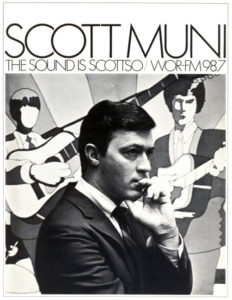 Because of our involvement in the music industry, we were friends with Scott Muni, and hung out at his club, the Rolling Stone in New York. Scott was a big disc jockey and his club was a hangout for a combination of music business people and wise-guy gangsters.
Because of our involvement in the music industry, we were friends with Scott Muni, and hung out at his club, the Rolling Stone in New York. Scott was a big disc jockey and his club was a hangout for a combination of music business people and wise-guy gangsters.
And of course there were girls. I met this pretty blonde girl named Alexis Wassel, who I was attracted to. She wasn’t interested in me, but she introduced me to her roommate, a Hawaiian girl called Xanthe, who I started dating. Xanthe danced at the Hawaii Kai restaurant on Broadway. Her mother ran the show there. Xanthe was an action-packed girl, wild and crazy. She taught me the good life. I was just a little dopey kid from the Bronx before I met her, and she was a street-wise Manhattan girl who’d grown up on Broadway so she introduced me to all the clubs. She worked at the Rolling Stone and was one of the girls who’d be on a big swing as you walked in.
People like Koppelman and Eddie Adlum, who I’d met a few years before at Look magazine, would hang out at the Rolling Stone.
I wanted to make a film, so Ed and I wrote Blonde on a Bum Trip together, though he probably wrote most if it. I was more involved in producing it and putting it together. As for the financing, we got the money from Koppelman and the gangsters who were behind Scott Muni’s Rolling Stone club.
Obviously I hadn’t had any experience in casting sex films, so I chose Xanthe and Alexis for two of the main roles. I also found a talnted, young cinematographer named Leon Gast. Leon went on to be a successful mainstream director and cinematographer, winning an academy Award for his film about the Muhammed Ali vs. George Foreman fight, ‘When We Were Kings’ (1996). We worked on several sexploitation movies together.
While Blonde on a Bum Trip may have technically been a ‘sex movie’, it was strictly ‘bra and panties’, and nobody took all their clothes off. It was just about taking your dress off and acting sexy.
One of the aspects I enjoyed most was the music. Jim Foley arranged for some of the bands that he and Koppelman were working with to put together an original soundtrack. Groups like The E-Types, The Vagrants, and The Bit A’Sweet who were all hot at the time – and we got the bands to appear in the movie too.
We even had an original theme song. The guys came to the office and just banged out a track in front of us.
Ralph Mauro was credited as the director of ‘Blonde on a Bum Trip’. He was Ed’s best friend, but his involvement in the film was small. He was just a person who was around. He did a little bit, but not much. I don’t know why he ended up with the director credit.
Ed and I sold ‘Blonde on a Bum Trip’ to Arthur (Morowitz) and Howie (Farber) who recently had started their own distribution company, called Distribpix. They said “We can get it played for you on 42nd St. We’ll get you a good opening.” That was important because if you wanted anything, you wanted a good opening, and you wanted the best theater.
We made good money from it.
*
4. Enrico Alexandros
After ‘Blonde on a Bum Trip’, I got involved in a few schemes with some of the gangsters I knew from clubs like the Rolling Stone. One guy I met was John Liggio, who was a connected mobster on the edge of the film scene. He and his brother Charles had made sex films with Lou Campa, using the names ‘Johnny Lig’ and ‘Chas Liggio.’
John Liggio was involved in Deep Throat before the Perainos, but got out at an early stage. John was an important guy in my life, and I actually lived in his apartment on 55th and 8th for a time. He had a big, two-bedroom apartment, and he’d let me stay in return for placing some bets at the racetrack for him.
It was through gangsters like John that I got involved in a kick-back scheme with the city government. One of the councilmen would give us a project to do, and I’d write checks out to people that didn’t exist. We’d get reimbursed for these payments. It went on for a while and we made plenty of money, before the councilmen got murdered in a suspected gangland hit.
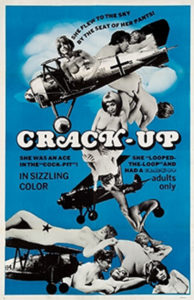 In the meantime, I was keen to keep making films, and so I formed a company called ‘Enrico Alexandros’ with a guy named Al Marvin. Al was a strange guy. For a start, he was completely bald. He’d never had a hair on his body, no eyebrows, no nothing. He had some sort of disease. But he did have access to financing so we became partners: He put up the money, and I produced or directed the films. Over the next few years, we made many black and white sex films.
In the meantime, I was keen to keep making films, and so I formed a company called ‘Enrico Alexandros’ with a guy named Al Marvin. Al was a strange guy. For a start, he was completely bald. He’d never had a hair on his body, no eyebrows, no nothing. He had some sort of disease. But he did have access to financing so we became partners: He put up the money, and I produced or directed the films. Over the next few years, we made many black and white sex films.
I rarely used my name on the films. Instead I was credited as Wizard Glick or Seaman Losch or Looney Bear or any number of strange names. Over the years, I’ve lost all records relating to them – so I’ve never been able to put together a comprehensive filmography.
We were working all the time and having lots of fun. We’d make a film in a day, or if we had a camera for the whole weekend, we’d do two more. We’d shoot 16 hours a day, stop for a little while and rest, and then come right back out again and start shooting again. It was tough but it was a bunch of people doing something they really wanted to do. These were young cameramen, young sound people, young crew – all people that wanted to make films.
It would typically take us sixty days from shooting a film to get it into the theater. The slowest part was often the theaters themselves, because they were booked up solid with other sex films. The market was full of them, so you’d have to wait your turn.
Our mission was simple. We would make the films as cheaply as possible, and then sell them as far and wide as we could. We weren’t interested in distributing the films ourselves, we just were looking for a flat sale to make an immediate profit. One thing we did before anyone else was that we went to California and sold our films there. This is still the late 1960s, and we were the first east coast filmmakers who went was out there and did that.
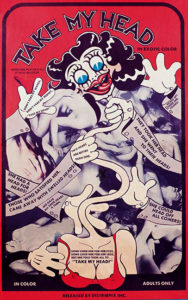 In New York, we sold many of the early films to Distribpix. They distributed our films like All Night Rider (1969), Moonlighting Secretaries (1969), and Crack-Up (1969).
In New York, we sold many of the early films to Distribpix. They distributed our films like All Night Rider (1969), Moonlighting Secretaries (1969), and Crack-Up (1969).
We also sold some of our Enrico Alexandros films to Stan Borden. His company was one of the largest on the East Coast. Interestingly we’d often see Ed Wood who would be hanging around in Stan’s office in New York at the time. Stan was a nice guy if you didn’t mind working with the gangsters he associated with. I always got along well with all of them, because they’re upfront and straightforward: You either like it, or you don’t like it, but you know where you stand.
It was through Stan that I met other filmmakers like Michael and Roberta Findlay, and the Amero brothers. They were in business with Stan, and I liked them as they were highly intelligent people. I don’t like stupidity, it’s dangerous. If you deal with a stupid person, you have no idea what they’re going to do. I can deal with a crook, because you know what they’re gonna do. But stupidity is risky.
Michael directed a few films for me, and Roberta worked on them as well. Their relationship was a strange one. They didn’t seem in love to me. She had so many men after her, it was ridiculous. Men loved her. She was a small woman with big breasts… and I guess that was one of the things all the boys like. She was always having relationships on the side. Michael had no clue. He was off in his own world.
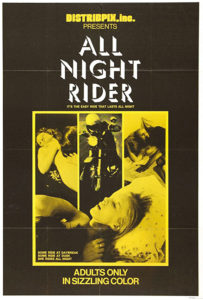 Michael could be strange, but he and I got on well. He almost got me into trouble once when we had a credit card operation going. Back then, banks were starting to send credit cards to everybody. You’d find them everywhere, on top of the mailboxes, outside of people’s apartments. I said to Michael, “You know what? These banks won’t do anything for a suspicious transaction under $50.” So Michael and I would take these cards and buy stuff for ourselves.
Michael could be strange, but he and I got on well. He almost got me into trouble once when we had a credit card operation going. Back then, banks were starting to send credit cards to everybody. You’d find them everywhere, on top of the mailboxes, outside of people’s apartments. I said to Michael, “You know what? These banks won’t do anything for a suspicious transaction under $50.” So Michael and I would take these cards and buy stuff for ourselves.
One day, I was buying some pants using a stolen card, and I was in the store dressing room. Michael noticed that the store clerk had a problem with our American Express card, and he panicked and ran out the door and disappeared. He literally left me with my pants down… I had to talk myself out of that situation.
One of the first films that Michael and I worked on together was The King (1968), a cheap lesbian film.
‘The King’ came about because I met these girls at the Fillmore East rock club on Second Avenue near East 6th Street on the Lower East Side. A couple of them were with a motorcycle gang. One of the girls was particularly un-kempt, never shaved, and told us she did golden showers. She said, “The gang needs some money because we’ve got a couple of court cases coming up. We want to do a film, so would you be interested in shooting some stuff?”
It sounded like a good idea, so I wrote a script called ‘The King’ and cast this girl in the lead role.
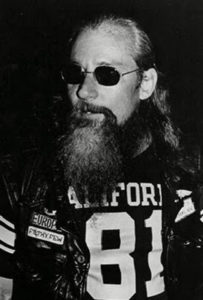 I went down and met the bikers on East 6th Street. The leader was this notorious Hell’s Angel called Sandy Alexander. The first day I was there, the boyfriend of the girl I’d met, this big red-headed guy, came up to me and put a gun to my head. I told him to go fuck himself. The other bikers seemed to like that, and started hugging me in acceptance.
I went down and met the bikers on East 6th Street. The leader was this notorious Hell’s Angel called Sandy Alexander. The first day I was there, the boyfriend of the girl I’d met, this big red-headed guy, came up to me and put a gun to my head. I told him to go fuck himself. The other bikers seemed to like that, and started hugging me in acceptance.
I got Leon Gast to film it, and I put my girlfriend in it too. In fact, when Sandy Alexander saw her, he said “I’ll give you one of my bikes, if you give me her.”
“I said, No – that’s alright. I don’t need a bike that badly.”
The bikers were about to have a big run with fellow Hell’s Angels coming from all over the country, so we arranged to shoot their get-together in Brooklyn down by the waterfront. It was an Italian area, and there were some local kids sitting out in their cars. All of the sudden, the bikers start beating up these kids, smashing their cars with chains and clubs. I thought “Oh man this isn’t going too well. This is not exactly what I wanted to shoot for a sex film.”
The Italian kids left, but a short while later I looked up and saw 40 or more big Italian guys coming towards us with bats and weapons. Fearing a bloodbath, I started talking to them until the police showed up. Leon captured it all on film, and we sold the footage to someone who was making a motorcycle movie.
As for our movie, we went back to my apartment to shoot it there. It had a big bathtub in the middle of the room (back then the bathtubs were in the living room!) and we filmed the opening scene in Charles Koppelman’s office. You can see records and magazines covers on the walls.
*
5. Going Solo
Our ‘Enrico Alexandros’ films were doing spectacularly and making substantial profits.
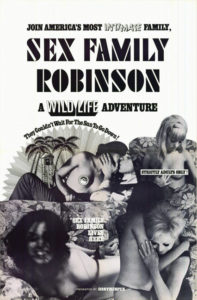 We were approached by a friend whose father was a Wall Street stockbroker. He said, “You should go public! We can get you a lotta front money and your future will be guaranteed!” It sounded good to me as money was always the constraining factor. So I took the idea over to my partner, Al Marvin, and he said, “No, we’re not doing it.” He was adamant. He didn’t want to be public. So the Wall Street investor guy suggested that I make my half of the partnership public. I trotted back over to Marvin, and he said, “No. You’re not gonna do it. I’m the President of the company. I have all the stock. You’re fired.”
We were approached by a friend whose father was a Wall Street stockbroker. He said, “You should go public! We can get you a lotta front money and your future will be guaranteed!” It sounded good to me as money was always the constraining factor. So I took the idea over to my partner, Al Marvin, and he said, “No, we’re not doing it.” He was adamant. He didn’t want to be public. So the Wall Street investor guy suggested that I make my half of the partnership public. I trotted back over to Marvin, and he said, “No. You’re not gonna do it. I’m the President of the company. I have all the stock. You’re fired.”
And that killed it. All that work I did, all the ‘Enrico Alexandros’ films came to an end, and I got nothing. Marvin actually offered Roberta and Michael my place in the company, but they declined.
So I started to make films on my own.
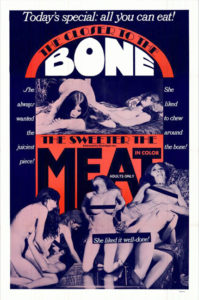 Around that time, I met a girl named Linda Varro. She was living in the same building as Ralph Mauro. She was Italian and her father was a gangster. We started dating, but never moved in together, because she was just too nuts. She was living with some hoodlums, who were into mugging people outside nightclubs. I never knew what part she played in their scheme, but she was involved with them somehow. Eventually I got calls from her saying, “You gotta get me outta here, these people are crazy.” She feared she was going to be killed. The thing really messed her up.
Around that time, I met a girl named Linda Varro. She was living in the same building as Ralph Mauro. She was Italian and her father was a gangster. We started dating, but never moved in together, because she was just too nuts. She was living with some hoodlums, who were into mugging people outside nightclubs. I never knew what part she played in their scheme, but she was involved with them somehow. Eventually I got calls from her saying, “You gotta get me outta here, these people are crazy.” She feared she was going to be killed. The thing really messed her up.
Linda worked on some of the films I made, and gave a screen credit like ‘Linda Vair’ on Sex Family Robinson (1968). Leon Gast had moved in, so I used a different cinematographer, Paul Glickman, who later shot Radley Metzger’s The Opening of Misty Beethoven (1976).
We used different actors for each film, but some became regulars. Harry Reems was in a number of these early sexploitation films. This was way before Deep Throat (1972). He was a nice guy who just wanted to be an actor. I remember girls like Linda Boyce and Ute Erickson being around and available for film work. They were best friends who could always be relied upon.
I soon realized that the more you pushed the envelope sexually, the more money you’d make. It moved from ‘bra and panties’ to full nudity very quickly. (Later on when the industry was hardcore, one of the distributors would ask me, “How many squirts do you have in the movie?” In his mind, this meant: how good is the film?) I pushed the envelope a lot. Each film I said, “Let’s try to go a little further, let’s try to do a little more.” I would look around to see what was going on in other people’s films, and if people weren’t getting arrested, then we’d do something more risque’.
On occasion, Michael and I were also hired to shoot loops. We found someone with a nice apartment, right off 5th Avenue, and we shot the loops back to back there. It was exhausting work. We got paid a fixed amount for making a certain number, and the only way to make it worthwhile financially was to shoot them all back-to-back over a continuous two-day period. We hardly slept. By that time, I knew how to get people to appear in front of the camera, so we had couple after couple trailing into the apartment, and we just made loop after loop until we were cross-eyed. We shot them on 16mm instead of 35mm, which we used for the features. It felt like a drop in class, and we didn’t feel good about that.
The films we sold to Distribpix did so well, that Arthur Morowitz offered me a partnership. It was to be a joint venture between the three of us, Arthur and Howie Farber at Distribpix, and me. I said no. I felt like I would make more on my own.
The exploitation business was a small world. We’d bump into other filmmakers at places like Ross Gaffney, which was a sound studio and editing house in Manhattan. Gerry Damiano would cut his stuff there, and I met Chuck Vincent there too.
By this time, I was working with Michael and Roberta all the time. It was a good match and it was easy work. They knew how to work quickly and cheaply, they had good contacts for locations and crew, and they had a name that ensured the movies would sell quickly. We made movies like The Closer to the Bone the Sweeter the Meat (1969), Take My Head (1970), Vice Versa! (1970) and Janie (1970).
‘Janie’ was one of the first films that Roberta directed herself. It was more of a horror film about a teenage hitch-hiker / serial killer. It was a good example of the way we had a small group of friends collaborating to make a film: Michael and Roberta both acted in it, Jim Foley wrote it and he also got some of Koppelman’s bands to do the music, John Amero was the production manager, my secretary, Jean Paiva, did the wardrobes and props, and Hank Rifkin, who was a veteran on the scene, helped out with the financing.
It also starred Linda in the lead role, using the name ‘Mary Jane Carpenter’, and wearing a blonde wig covering her dark Italian hair. This was supposedly her big break. I put her on radio and TV shows promoting the film, but it didn’t get much distribution and went nowhere.
The sad thing was that Linda really wanted to be a star. She had injected silicon directly into her breasts to make them bigger, and she thought she had a great voice, so she used to practice reading aloud. Her favorite soliloquies were Socrates, though unfortunately she pronounced his name Soh-Crates.
*
6. ‘The Slaughter’ (1971) becomes ‘Snuff’ (1975)
In the early 1970s, I started to work with some people that wanted to set up tax shelters, which were very popular around that time. Investors could basically write-off their entire investment in a film against their income, which meant you got all your money back irrespective of whether the film made a profit.
I got involved with some guys who were bringing movies over from Italy that had cost a million or two to make. The Italians brought them over here and then sold them for, say, $500,000. Often the films never even got released in the U.S., but the US buyer still got their write-off.
That’s how I got the idea to go to Argentina and make The Slaughter.
I met a guy at Ross Gaffney who suggested the idea and fixed me up with a tax attorney. He put up $40,000 for the film, which he would treat as a tax write-off. He didn’t care if the movie made any money or not.
I decided to go down to Argentina in 1971 and make the film there. Argentina had had one of the biggest movie industries in the world in the 1930s and 1940s, and they still had good studios and facilities.
Michael had a script about a film producer arriving in Buenos Aires to make his next big feature but he runs into murder and intrigue, so we went down to Argentina to make the movie – just Michael and Roberta, my assistant Jean Paiva, and my old girlfriend Xanthe, who had one of the lead roles.
I decided not to take Linda, as she had become too troublesome to deal with by that stage. She reacted by having an angry fit, throwing things around, and shouting and screaming. That was the last I saw of her… I heard she ended up in California trying to be a star.
When we got down to Argentina, I went to the bank to get money, which had been wired to me. The bank clerk kept asking me, “Are you J. Angel Martine?”
I repeated, “No, I’m not J. Angel Martine”, and in the end they gave me the money. I thought it was a funny situation, and the name ‘J. Angel Martine’ just stuck in my mind, so I started to use it occasionally as my filmmaking name.
We hired the rest of the talent and crew when we got there, including Mirta Massa, who had been the first Argentinian to win the Miss International beauty pageant.
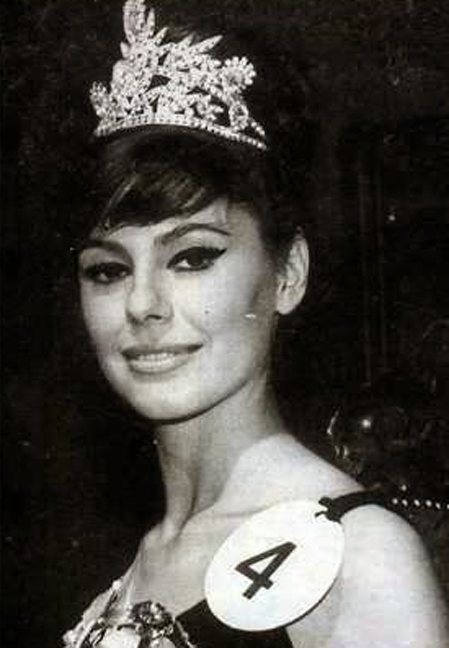 Mirta Massa, Miss International in 1967
Mirta Massa, Miss International in 1967
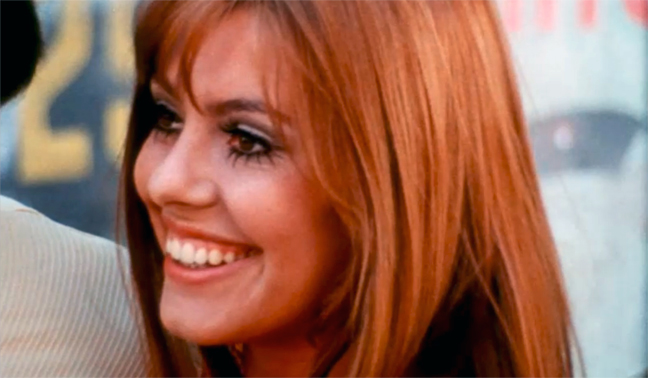 Mirta Massa, in ‘The Slaughter’ (1971)
Mirta Massa, in ‘The Slaughter’ (1971)
I had a small role in the film, as a victim of the killer.
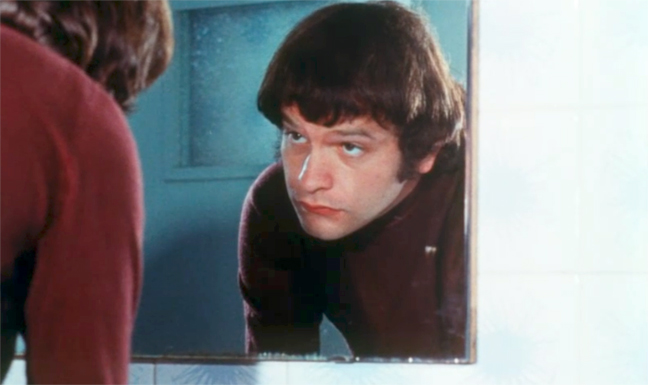 Jack Bravman, in ‘The Slaughter’ (1971)
Jack Bravman, in ‘The Slaughter’ (1971)
The shooting went smoothly. The only problem was getting there. Michael was terrified of flying and our flight stopped off in a number of places before we landed in Buenos Aires, by which time Michael was a nervous wreck.
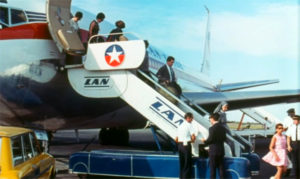 After we wrapped, I wanted to fly back via Rio so I could spend some time on the beach there. I had called the airline, Lan Chile, and convinced them that if I featured their airline in the movie, they would give Michael, Roberta and I free airline tickets to Rio in return. They loved the idea, so we had them land a jet for us which was in a scene in the movie.
After we wrapped, I wanted to fly back via Rio so I could spend some time on the beach there. I had called the airline, Lan Chile, and convinced them that if I featured their airline in the movie, they would give Michael, Roberta and I free airline tickets to Rio in return. They loved the idea, so we had them land a jet for us which was in a scene in the movie.
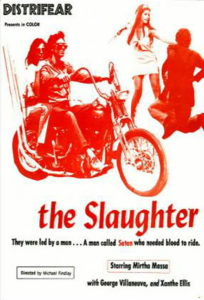 When we got back to New York, Roberta edited ‘The Slaughter’ and we showed it the investors and they loved it. However when I flew out to California with Michael, the guys there were afraid of getting behind it because they thought it would remind people of the Sharon Tate murders, so they turned it down. It died a death after that, but the investors didn’t care because they got their tax credit.
When we got back to New York, Roberta edited ‘The Slaughter’ and we showed it the investors and they loved it. However when I flew out to California with Michael, the guys there were afraid of getting behind it because they thought it would remind people of the Sharon Tate murders, so they turned it down. It died a death after that, but the investors didn’t care because they got their tax credit.
The trip to California was a nightmare for other reasons. I insisted to Michael that we go down to Tijuana. My whole thing was that I wanted to see the donkey show. It was terrible, we were robbed. They showed us some pornography, and I said, “No, no, I want to see the donkey show.” So they robbed us, and took all our money – except for $10 so that we could get back.
Then there was the flight with Michael. I’d never seen him so badly affected. He was petrified for hours. He knew Roberta was leaving him at this point, so he wanted to get back home as soon as he could. She’d started going out with a kid called Ritchie who worked at Ross Gaffney, who was ten years younger than her.
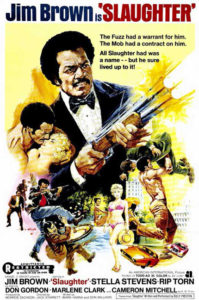 Out of the blue, we got contacted by the producers who’d just made a film called Slaughter (1972). We’d registered the name ‘Slaughter’ first, so they were offering us $20,000 to not call our film by the same name as theirs. This covered most of our budget… for a film that no one wanted to release, so we accepted.
Out of the blue, we got contacted by the producers who’d just made a film called Slaughter (1972). We’d registered the name ‘Slaughter’ first, so they were offering us $20,000 to not call our film by the same name as theirs. This covered most of our budget… for a film that no one wanted to release, so we accepted.
After that, the film died. It just sat around in my storage. I forgot about it.
About four years later, when I was distributing some other films, I sent a print of the wrong film to one of the porno houses: by mistake, I sent them a print of ‘The Slaughter.’ I got a call back from the theater guy there who complained that he’d been sent the wrong film. He said, “Are you, crazy? Sending me this horrible film… it looks like a snuff film to me!”
A light bulb went off in my head. I went to see Allan Shackleton, who was a distributor with whom Roberta was having a relationship.
I said, “Why don’t you turn this into something that looks like a real snuff film?”
Allan hired a guy, Simon Nuchtern, and shot a new ending in Carter Steven’s studio, and then he re-released the film as Snuff (1975).
It was a huge box office hit for him and he made tons of money. I never went to see it, but I remember when it opened on Broadway, and there were lines of people up and down the block, going to see it. It turned into a media frenzy too. People would attack his condo on 57th Street in retaliation for what they thought was a real snuff movie. Of course Allan played along with those fears which stoked the media attention.
I never even saw a dime.
*
7. From ‘Invasion of the Blood Farmers’ (1972) to ‘All in the Sex Family’ (1973)
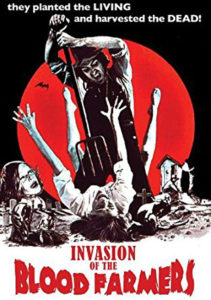 Michael, Roberta and I continued working on each others films – and also other people’s movies too. We all worked on Invasion of the Blood Farmers (1972) which was my old friend Ed Adlum’s horror movie, that he shot in upstate New York. Ed Adlum and I wrote it with Ed Kelleher, a guy who wrote features for magazines. We’d sit down at the bar and drink, and the three of us would throw ideas around, the crazier the better. Ed Kelleher comes back into my story when he wrote Madonna: A Case of Blood Ambition, which was one of the horror movies I put out nearly 20 years later.
Michael, Roberta and I continued working on each others films – and also other people’s movies too. We all worked on Invasion of the Blood Farmers (1972) which was my old friend Ed Adlum’s horror movie, that he shot in upstate New York. Ed Adlum and I wrote it with Ed Kelleher, a guy who wrote features for magazines. We’d sit down at the bar and drink, and the three of us would throw ideas around, the crazier the better. Ed Kelleher comes back into my story when he wrote Madonna: A Case of Blood Ambition, which was one of the horror movies I put out nearly 20 years later.
The film was backed by these coin machine gangster guys that Ed Adlum knew through his contacts at Cash Box magazine where he worked.
Xanthe was in the film too, and I directed a bit of it, but I had a disagreement with some of the producers. They got mad at me, and threw me out. I can’t remember what it was about but the gangsters were close to Adlum, so he sided with him. I wasn’t involved in the final version of the film.
By 1973, the market for sex films had completely changed. Everything was expected to be explicit now after Deep Throat had caused such a splash the previous year.
I continued making films using a variety of pseudonyms, often a different name on each film. The only difference was that the films were now hard-core.
I made a couple of quickies called Burning Desire (1973) that featured Georgina Spelvin and Marc Stevens, and Blow Hard (1974) with Jamie Gillis and Tina Russell. I starting using the alias ‘J. Angel Martine’ that I’d come across in Argentina on a few of them. Roberta and Michael had split by now, and from then on, I worked mostly with Roberta.
In 1973, I put together a film called All in the Sex Family.
The director of All in the Sex Family was Robert Ruttenberg, a guy who worked for CBS. He had a real job and made good money there, and he moonlighted on adult films. It was just something that he liked to do. I was pretty close with him, and he was a really fun guy. We hired Jamie Gillis and Tina and Jason Russell, and Roberta shot it out in Suffolk County. We shot it partly at the Patchogue Drive-In theater in the middle of the winter when no one else was there.
The film turned out well – that is, until after it came out. We were the target of a huge bust. The cops managed to trace us by correctly identifying the drive-in, and then reading the license plates from the cars we used in the movie.
We were all charged – the actors, the crew members, the distributor Hal Rosen who I’d met at MGM in the 1960s, and even the people who supplied the locations. The cops woke everyone up at dawn, arrested them, and hauled them to Suffolk County courthouse to be arraigned. Apparently, when they arrested Jamie, they asked him if he was going to resist arrest. Jamie said, “I’m a lover, not a fighter.” I was the only one they couldn’t find that first day. I think I’d taken some Quaaludes so I was sound asleep when they came knocking.
We were represented by Kassner and Detsky, who were mob lawyers. They defended all the sex filmmakers at the time – John Amero, Gerry Damiano – all of them had Kassner and Detsky on speed-dial. They never charged a dime. They did it to get their name in the papers. They were the big defenders of mob-related pornography charges, which is where they made all their money. And it didn’t do us any harm that Roberta was having sex with Kassner either…
The most annoying factor about the case, was that we had to drive all the way out to Suffolk Country every time they had a court meeting.
The authorities didn’t really have a case, but it dragged on for years. In the end, I got a misdemeanor, a $500 fine. That was my conviction.
*
8. XXX in the 1970s
In the mid 1970s, I continued to be prolific making adult films, though after the legal issues with ‘All in the Sex Family’, I rarely used my real name again.
I started to working a lot with Bunny Atlas who distributed many of my films through her company Bunnco. Bunny had started out as a secretary at Distribpix but then went into the distribution business by herself. We worked well together.
When Liggio died, I got his apartment, which I shared as an office with Bunny. I also lived there but it was big enough for the two of us to work there together. I produced films like The Wetter the Better (1975), The Honeymooners (1976), The Night of the Spanish Fly (1976) and Bunny distributed them.
I was always in interested in the common denominators that made some films particularly successful. It struck me that anything French worked great, and anything that called attention to young women. As soon as you put out a film with that kind of title, men would go to see it. We shot a series of ‘French’ films in upstate New York in Nyack – like French Schoolgirls (1976), French Classmates (1977), French-Teen (1977) – that all did great. My primary motivation was money. I like my Mercedes, I liked my clothing, I liked my lifestyle. That was my main reason. Plus I enjoyed what I was doing, so I couldn’t ask for anything more. If I ever ran out of money, I would just go out and make another movie.
Roberta worked on a lot of them, as did this young kid named Chris Covino. He directed many of my films.
I did a lot of compilations as well. I would take loops or scenes from other films, and make another movie. It cost me nothing, and so whatever it made, it was all profit.
Sometimes I shot a few scenes to tie the existing footage together, but it was all about getting a film out as cheaply as possible.
I usually funded the films myself, but occasionally someone else would finance them. One such person was Arthur Weisberg, who went on to produce Abel Ferrara’s early movies. Arthur was a smart business guy, and I knew he was going to cheat me out of money, so when he’d give me a check to make a single film, I’d make two and keep one film for myself. And Bunny would distribute them both. Arthur never found out. He was doing so well, he never noticed.
He was friendly with the manager of the Los Angeles Dodgers, and he’d send me tickets for World Series games. When I got the tickets, I’d run up to the Bronx, sell them for $500, run out to the Meadowlands racetrack, bet the money on a horse. Arthur took me to Vegas too, where he had his own table to gamble. He would literally gamble by himself, because he didn’t have anybody to gamble with him.
I got arrested again when I flew John Holmes into New York. We were making a parody of Warren Beatty’s Shampoo (1975) in Asbury Park, New Jersey. The cops jumped in, and the whole cast and crew were taken into custody… Eric Edwards, Roberta and her partner Walter Sear, John Holmes, Serena.
We spent the night in jail. John Holmes was going nuts. He was charged with possession of a handgun and drugs as well. He gave the cops his big ring asbond to get released. I had enough cash with me to get myself and a couple of people out. Bunny put up the money to get everyone else out.
The case was dropped eventually, but the whole thing was a reminder of how quickly you could end up in jail.
Bunny’s business was getting bigger, and she was working a lot with Chuck Vincent. She had two sons, and one of them worked in the office. He wasn’t always the brightest spark. One day, he came up to me and said, “My friend has got some stolen TVs, and he’s willing to sell them to us.”
He said, “They’re on 86th Street, behind the Macy’s store.”
So we go trotting up to Macy’s, and sure enough a guy is in the back there waiting for us. We gave him the money, and he ducked back inside the store… and disappeared.
After a while, I said, “What’s going on? Where is he? I thought you knew the guy?”
Bunny’s son said, “I don’t know. I just met the guy. I guess he’s not coming back” So we lost our money. What a jackass.
In the late 1970s, I got married to Jim Foley’s secretary, and we moved out to a place in New Jersey called Guttenberg, right across the river from Manhattan.
Not long after that, I was on vacation in Florida and I started having trouble breathing so I checked into the hospital, and I went into cardiac arrest.
All of a sudden, I couldn’t breathe. It turned out I had massive blood clots. My whole body was a blood clot. My legs, my lungs were completely full. The doctors said I was in grave condition, and I probably wouldn’t live through the night.
As a last resort, they shot me up with a drug called Streptokinase, which thins your blood, and I was in intensive care for a couple of nights. After I survived that, I was in hospital for six weeks before transferring to a New York hospital. Little by little, after being in hospital for a year, I started to get stronger. My wife on the other hand was a complete disaster. We divorced the next year. I’d only been married to her for two years.
I stopped all involvement in filmmaking for a few years as I recovered.
*
9. The Rise of J. Angel Martine
When I returned to films, I revived my ‘J. Angel Martine’ name. I still didn’t want to have my own name on my movies. I knew that some people, like Gerry Damiano, always put their names on their pictures, but I wasn’t looking to become a big name in the business. I wanted to make money, enjoy what I was doing, and I didn’t have the ego of wanting to win any awards. That wasn’t why I was making the films.
When I resumed making films, I directed many of them myself, and also hired Chris Covino to be the director on several of them. He was a really nice kid, who just wanted to be a director. He took it all very seriously.
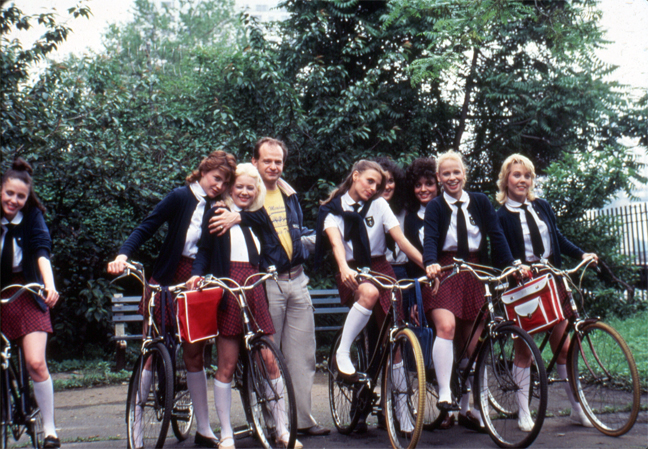 Jack, on the set of ‘Flash Pants’ (1983)
Jack, on the set of ‘Flash Pants’ (1983)
Roberta would still crew for us. She was great. Still nuts, but great. I tried to use the same people all the time.
A feature of many of these films was that I brought in actresses from the west coast to star in them. They had big name appeal. It was expensive, but the additional cost of flying them in wasn’t a huge increase to the budget. So we brought in people like Shauna Grant, Stacey Donovan, and John Holmes again. If I had it in the budget, I would do it. Shauna Grant for example came in, and was very sweet and reliable. She made her money and that was that.
 Shauna Grant, in a New York photo shoot
Shauna Grant, in a New York photo shoot
Most of the actors were local though. Ron Jeremy was my favorite. He did a lot of movies with me, though he was usually last on the list to call. We’d called him when nobody else would show up. I’d phone him at his parent’s house, and whatever he was doing, he’d always say, “Yeah!” and then come in real fast.
Many of the films in this period were for Arthur Morowitz company, which was now making money putting the films out on videotape. It was a far cry from our first film together, ‘Blonde on a Bum Trip.’
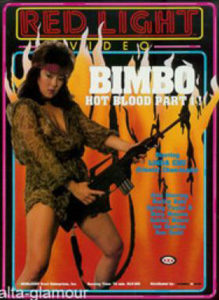 The films made good money. Some, like Bimbo (1985), which was a rip-off of ‘Rambo: First Blood’, made a ton of money. We had a great ad campaign for that, with an Asian girl carrying a machine gun. Barbie Dahl was in ‘Bimbo’, and she was a crazy. She was from the Midwest. She’d come into New York with her crazy husband. He’d volunteer to work for free. Very Midwestern. Very strange guy.
The films made good money. Some, like Bimbo (1985), which was a rip-off of ‘Rambo: First Blood’, made a ton of money. We had a great ad campaign for that, with an Asian girl carrying a machine gun. Barbie Dahl was in ‘Bimbo’, and she was a crazy. She was from the Midwest. She’d come into New York with her crazy husband. He’d volunteer to work for free. Very Midwestern. Very strange guy.
Sadly Chris Covino passed in the early 1980s. He was one of the first victim of AIDS. He was going out with a guy from Air Canada, who apparently brought the virus into the U.S. After Chris’ death, I hired other directors like Eve Milan who made Flash Pants (1983), First Time at Cherry High (1984), and The T & A Team (1983), and used the name ‘Jack Rabbit Productions’. I made hundreds of movies during this time – using many, many names. Some of the films are Swedish Sorority Girls (1978), Here Comes the Bride (1978), Private Schoolgirls (1983), Lady Madonna (1985), Girl Busters (1985), and Eatin’ Alive (1985). In my film, Velvet High (1981), I made a rare acting appearance too.
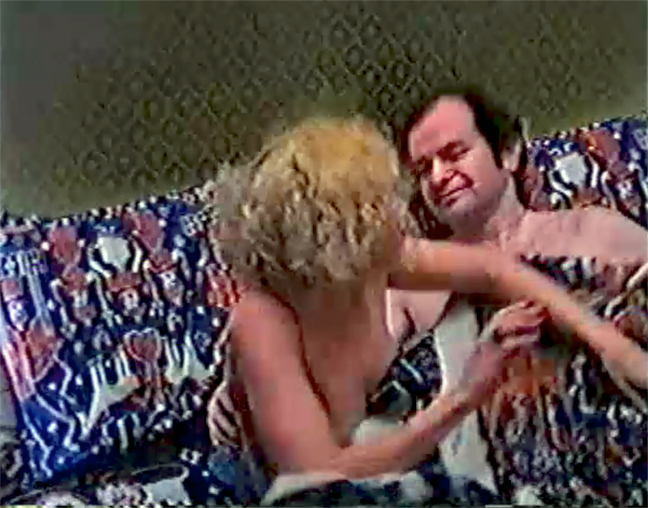 Jack, with Christie Ford in ‘Velvet High’ (1980)
Jack, with Christie Ford in ‘Velvet High’ (1980)
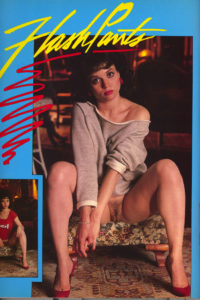 I didn’t like to shoot in studios, unlike guys like Leonard Kirtman. Leonard was very fast at making movies. He had his own studio, and he was knocking them out quickly. I never had a studio. I did everything on location, and so always looked for fancy houses we could film in. I used to hit up the guys at Columbia Records who I knew had houses in Connecticut, so a lot of these movies were made up there.
I didn’t like to shoot in studios, unlike guys like Leonard Kirtman. Leonard was very fast at making movies. He had his own studio, and he was knocking them out quickly. I never had a studio. I did everything on location, and so always looked for fancy houses we could film in. I used to hit up the guys at Columbia Records who I knew had houses in Connecticut, so a lot of these movies were made up there.
It was a good time to be in the business. There were a lot of theaters in California and they needed a new film every week.
Eventually the demand was for video. It was a necessity, but it killed the business as far as the filmmakers were concerned. It was the beginning of the end. People didn’t realize that at the time, but it was dying. That was when I decided to get out of the adult film business. I remember I shot 10 videos for Distribpix / Video X-Pix, but after that I got out.
*
10. The Horror Years
I’d been selling films to a guy in Montreal for years, and one day he says to me, “Why don’t you come up and make some movies here? They’re doing tax shelters. You know how they work. You can make some good money.”
I looked into it, and it was a golden opportunity. They were giving you 30% on your money. For every dollar you put up, you wrote off a dollar thirty. So why would anyone turn that down? When a movie was finished, the investor had the choice of taking his write off, or getting the movie. Nobody wanted the movie. They wanted the write-off.
I was friends with Mark Goldstein, whose father Sheldon was a millionaire. Shelly saw the financial good sense in this opportunity, so we put together Zombie Nightmare (1987).
It starred Adam ‘Batman’ West and Tia Carrere, and it was my first big job directing. The budget was $250,000 so it was a different scale to anything I’d ever done, but it was Roberta who encouraged me to do it. She kept saying, “You can do it, you can do it.” So I did.
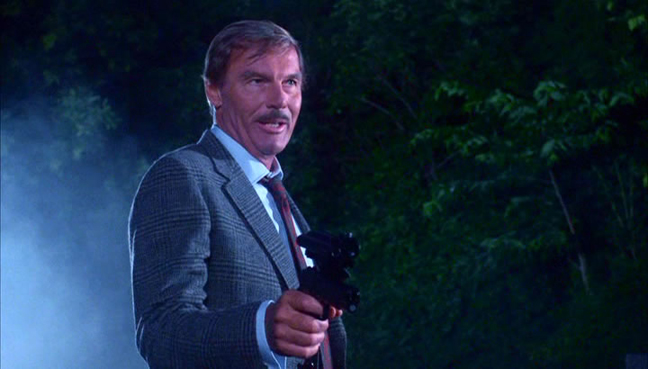 Adam West in ‘Zombie Nightmare’ (1987)
Adam West in ‘Zombie Nightmare’ (1987)
We shot it in Quebec, Canada. It was fun and it came in on budget. It did really well.
I was proud of the heavy metal music soundtrack. It was really good. It was also pleasing to see how many people who worked on the movie became big Hollywood stars, like Shawn Levy, who is now a big director.
After that, I learned the business, and I made friends with a guy, Roger Asine, who had his own studio and equipment. We made more movies because he could over-bill everything – which from a tax perspective meant more money for us.
We made two more movies straight away – Mind Benders (1987) and The Carpenter (1988) with Wings Hauser – and made a lot of money from both of them.
I went back and made Night of the Dribbler (1990) which is one of my favorite movies, and Voodoo Dolls (1991).
It was the same story. The investors made money, and I would own the movie. I still hold ownership of all of them – if anyone’s interested in re-releasing them.
*
11. Afterward
Those days in the 1960s through to the 1980s were great. It was like a dream for me. I couldn’t believe what I was doing. I was young, driving a Mercedes, living in Manhattan, surrounded by pretty girls… it was a great life. We’d shoot a film in a couple of days, then we’d have a couple of weeks off.
What more can I say?
*
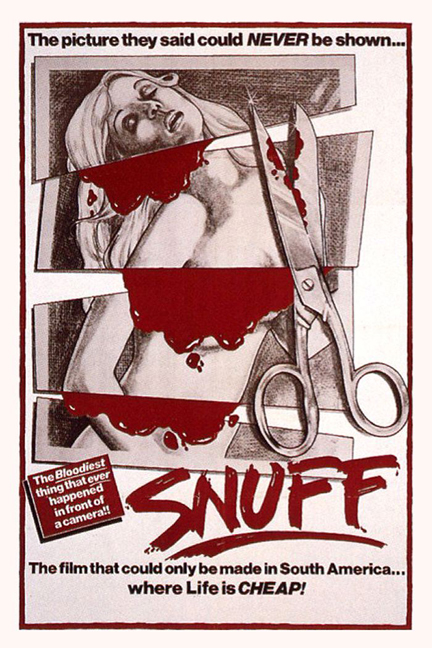
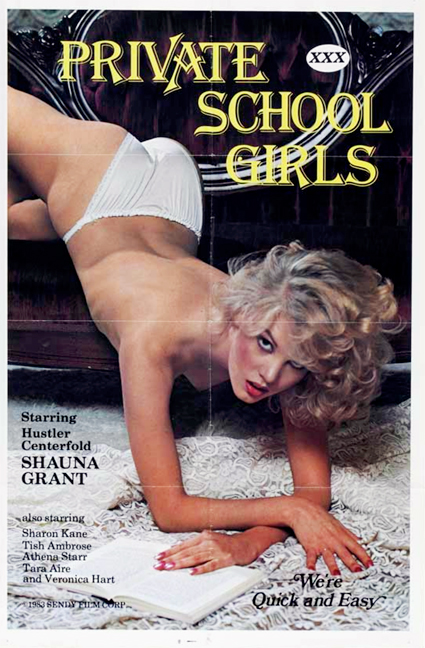
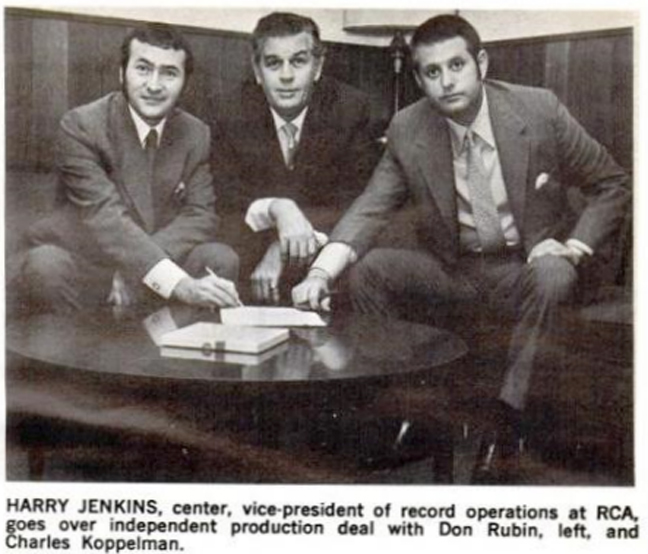
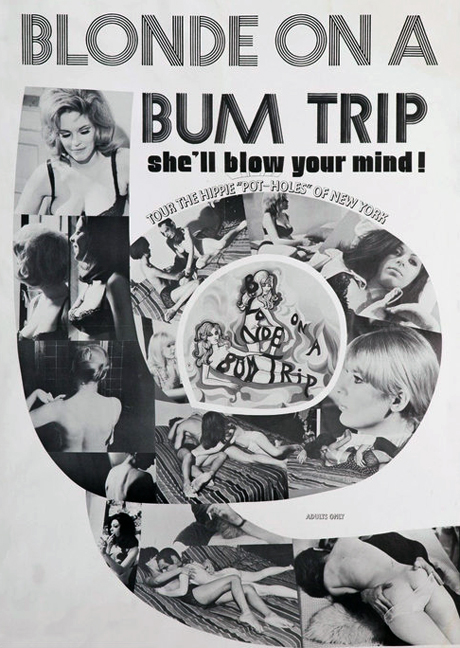
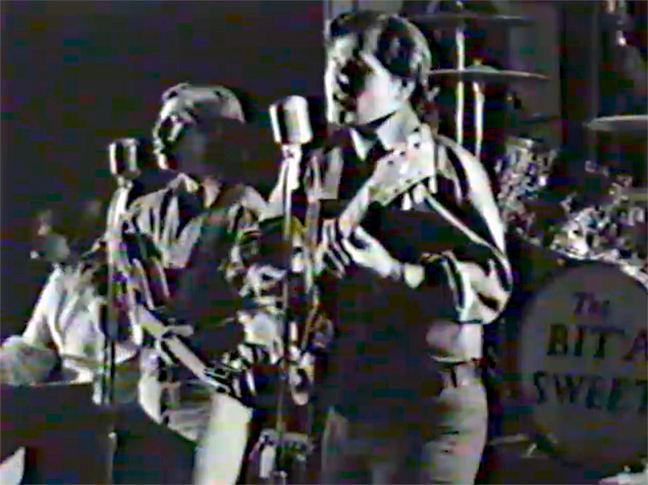
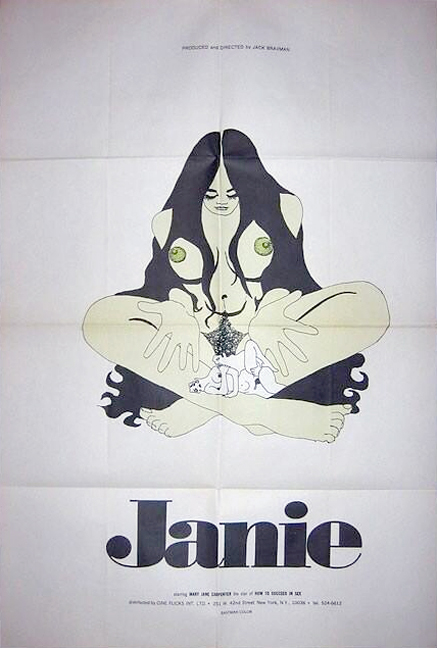
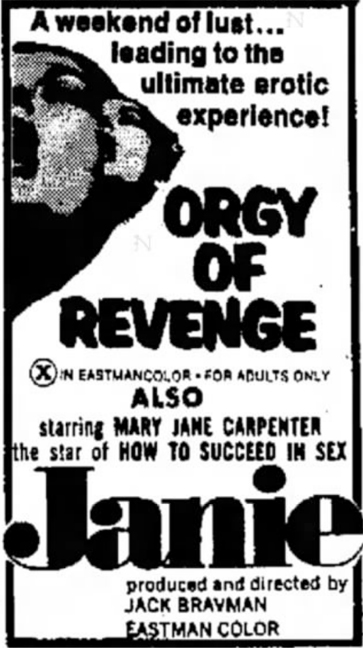
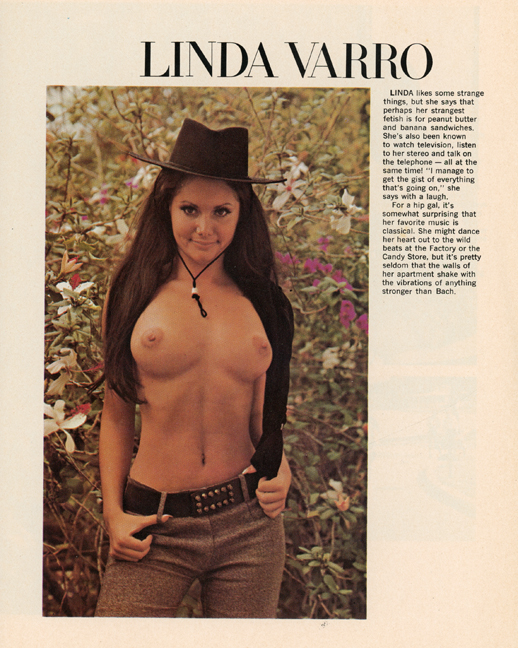
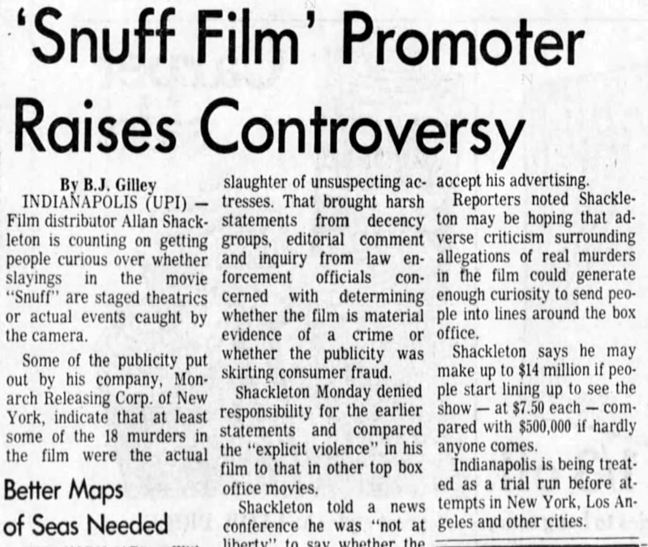
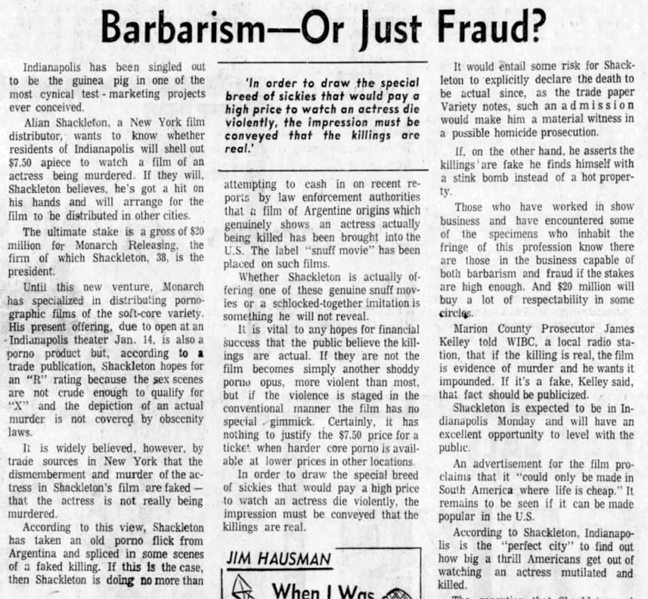
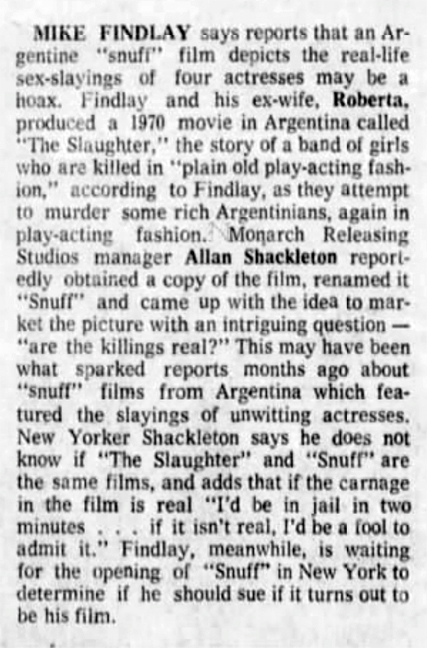

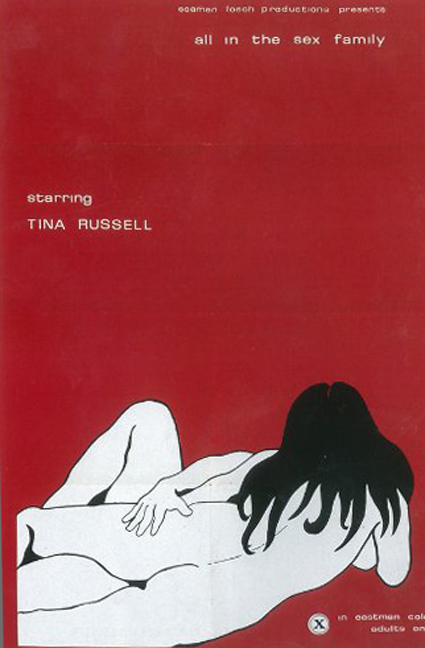
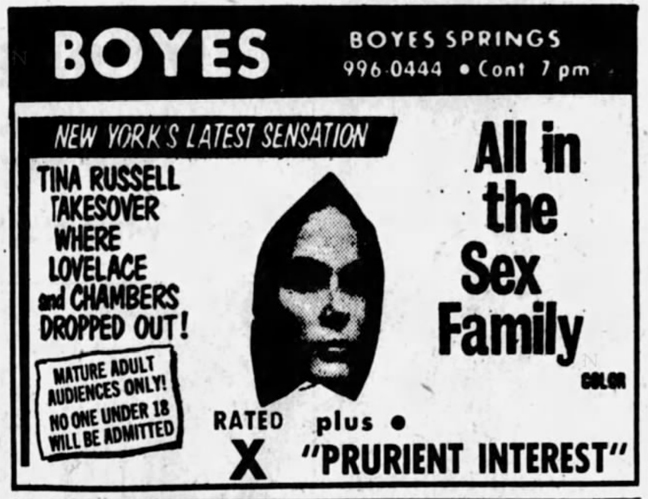
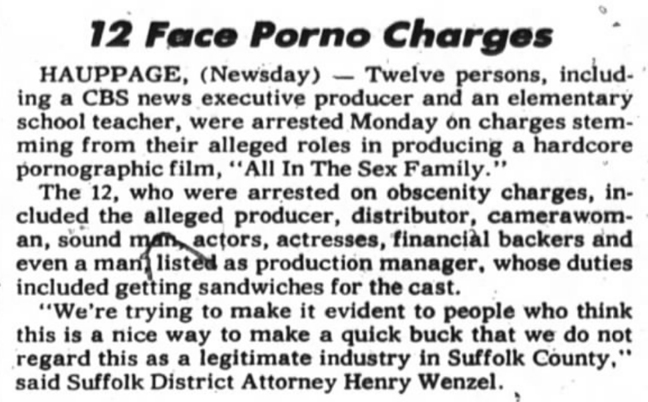

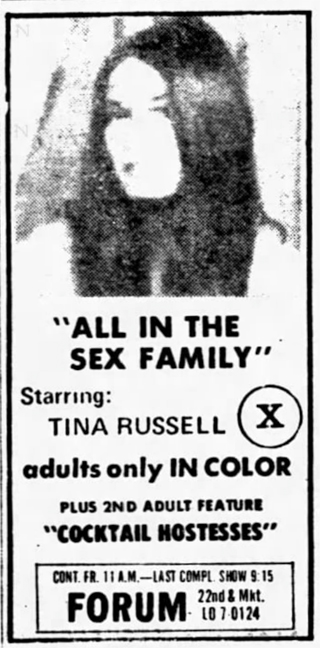
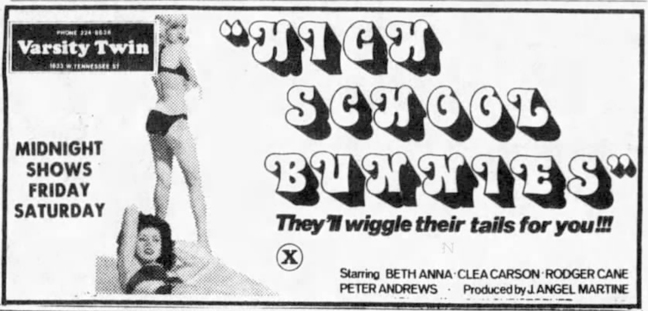
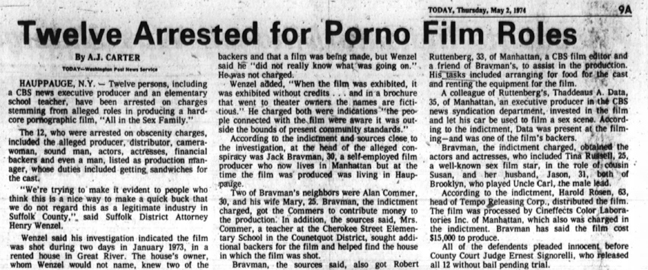
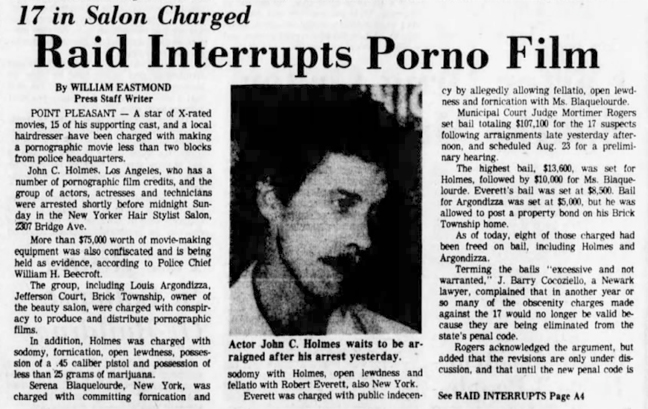

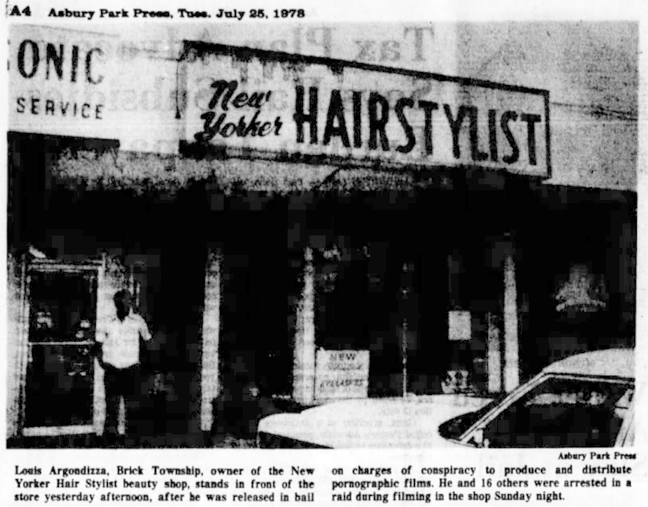
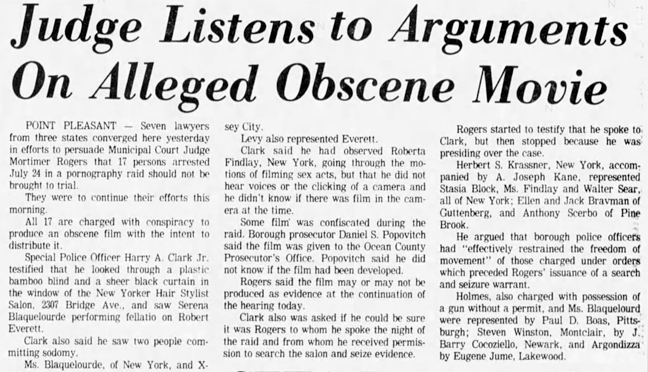
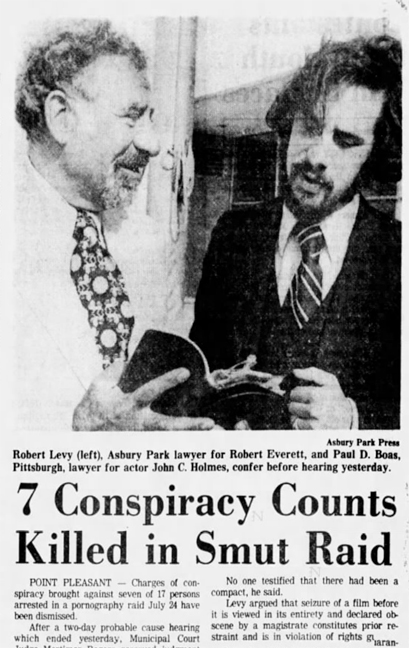
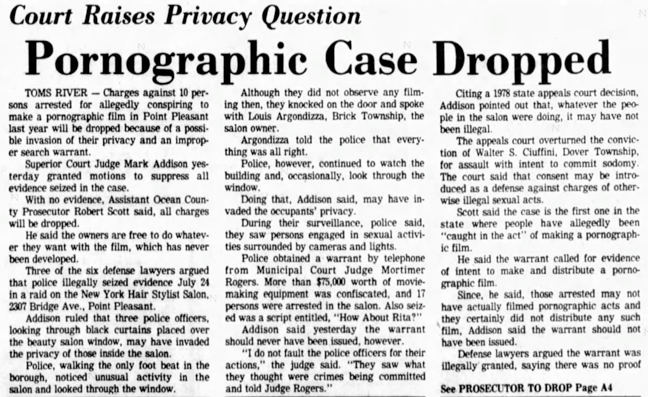
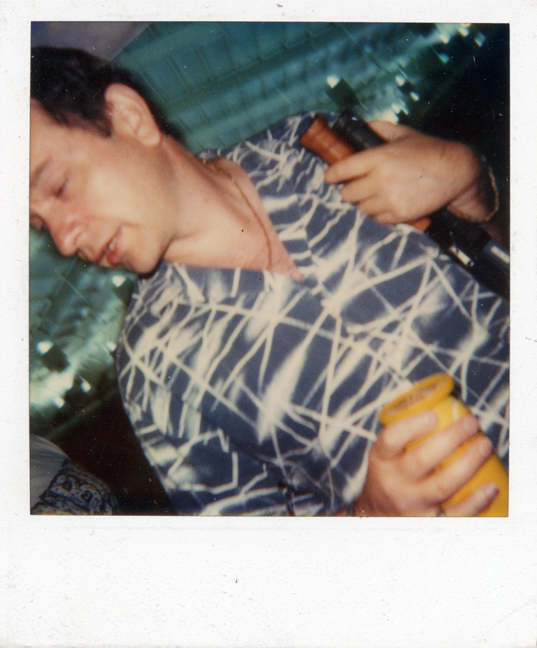
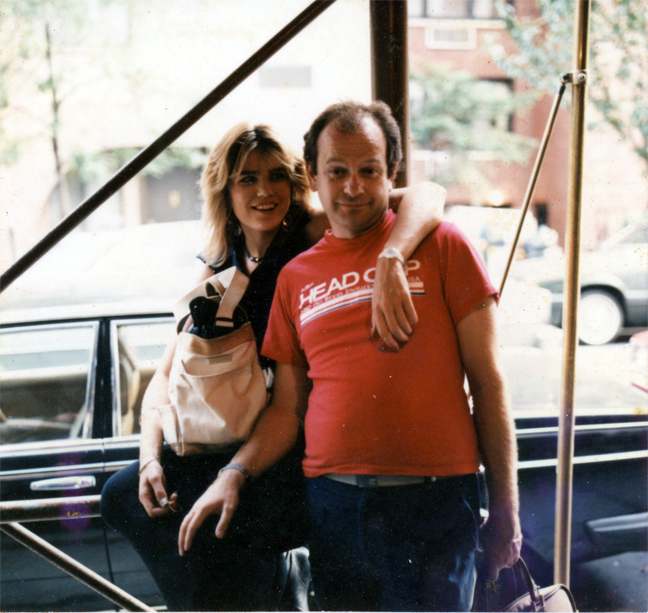
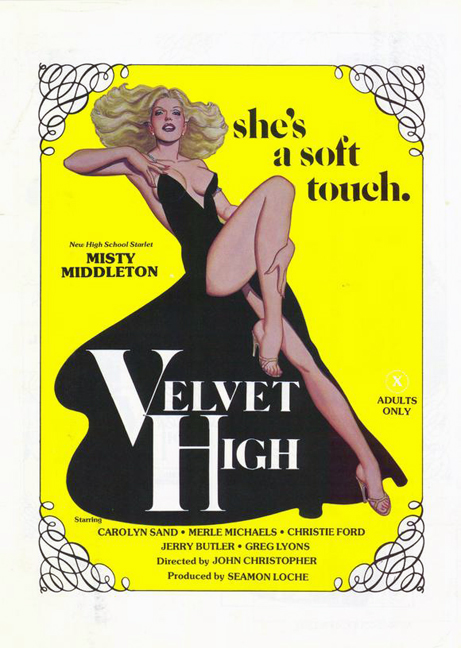
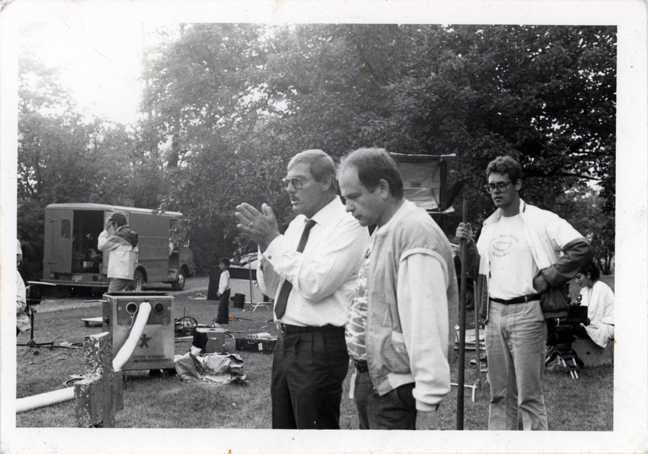
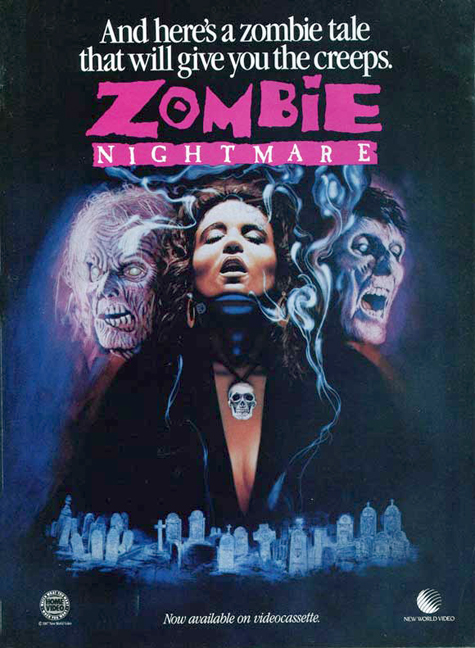
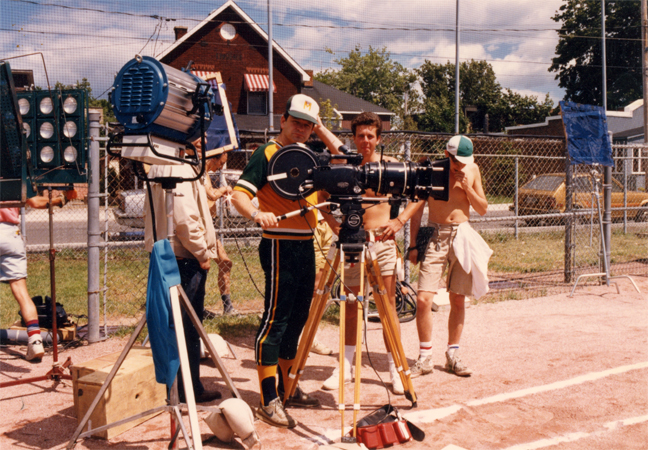
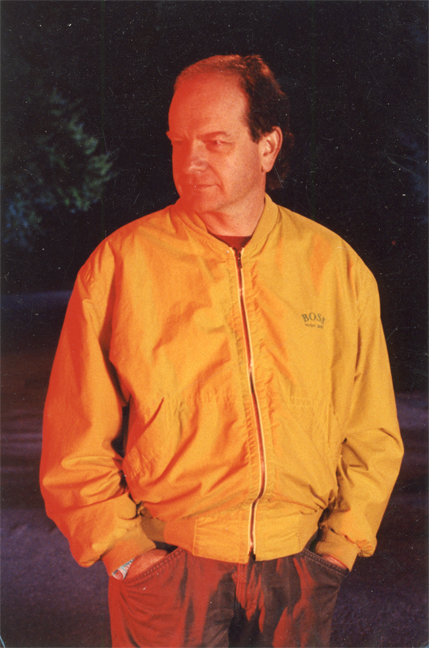
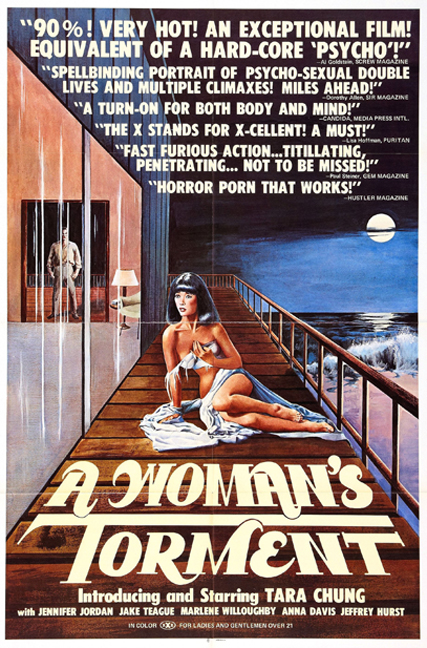
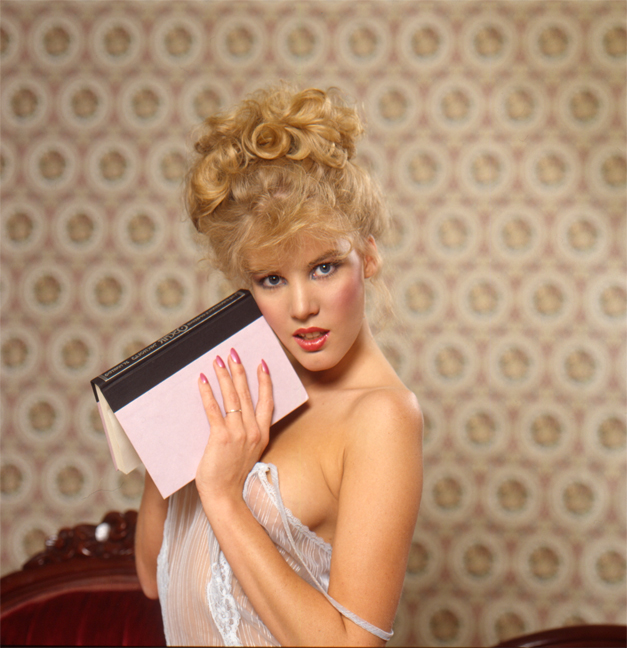
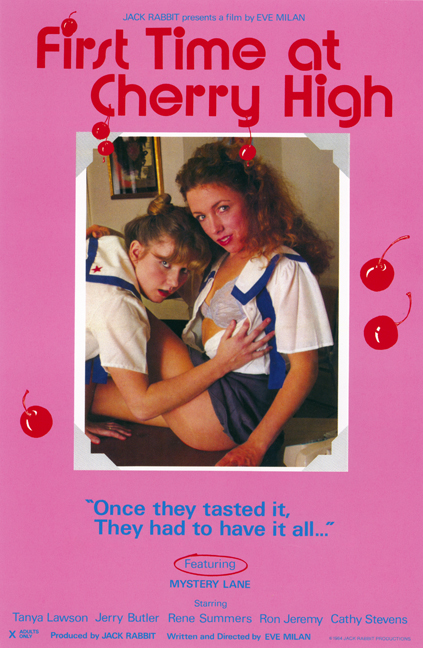
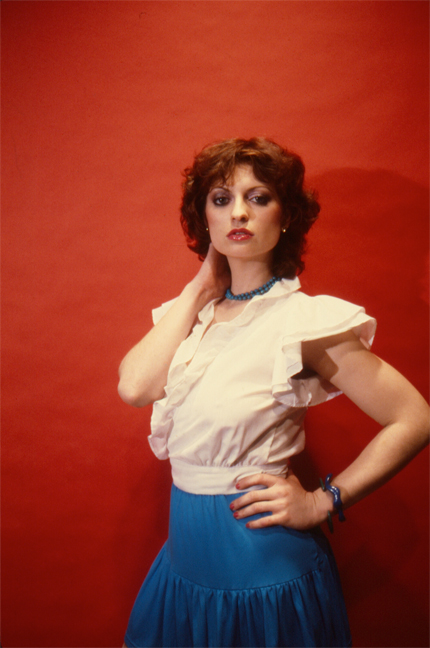
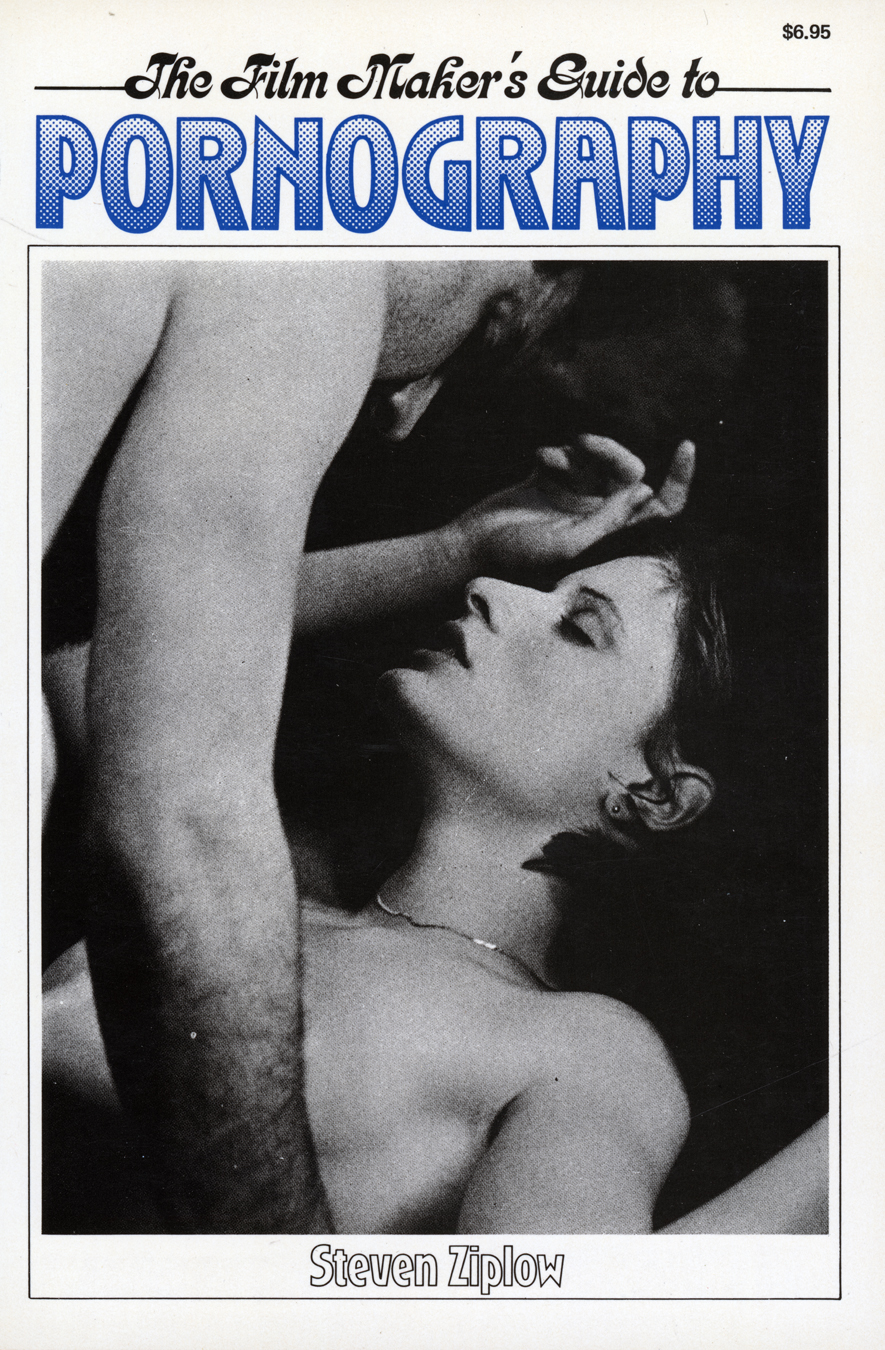

FIRST POSTER!!
Another light is shone on the fascinating underbelly of NY adult film courtesy of the undisputed masters of golden age entertainment…. the Rialto team.
Fascinating read, and another mystery resolved. I thought ‘J ANGEL MARTINE’ was an amalgam of Chris Covino and Roberta Findlay, so this is good to understand.
Love the newspaper clips too, and hugely interested to reading about the two arrests – perhaps the subject of a future Rialto deep-dive?
I can imagine only maybe Leonard Kirtman and / or Roberta Findlay would run Jack Bravman close in terms of output over such a long period.
Thanks Jack for your candor!!!
Good history!
I worked as an actor on that film that was busted in NJ. luckily I had to run back to the city for some pre-production work on one of my own films. I was scheduled to come back to the set a day later but as fate would have it they all got busted that night. I had left my suitcase at the location and for a while there were questions from the authorities as to my involvement as director or producer but as I wasn’t present at the time of the arrests I was never charged with anything.
Another great job from the Rialto Report.
Another chapter in adult film history revealed by the Rialto crew. It was rough back then. Gangsters, police, government, court cases. Everything is taken for granted today.
Interesting how one man’s career can incorporate so many seismic changes to the industry – from primitive 35mm black and whites through to hard core shot on videos.
Note to so-called adult film historians: get out from behind your lap tops and interview some people.
Enough theoretical study. More factual history!
THE TRUTH IS OUT THERE!
Love it! Interesting! By the way in Brasil in the 80’s one movie named Snuff (Victims of Pleasure) was made and basically is about this famous movie. Was he involved?
I would be very curious as to whom the Montreal connection is…was it Cinepix? I worked for them on a soft-core tax shelter film shot in the wilds of Mont-Tremblant, and had to get office equipment from a storage facility they had in St-Henry. The place was huge and loaded with thousands of film canisters of various films they had either produced or distributed here in town. There was a huge amount of sexploitation and/or hard movies in there; a real treasure-trove.
You’ve interviewed some dodgy characters over the years, but Jack Bravman ranks up there with Ray Horsch from Podcast 27. April and Ashley, after you shook hands with him, did you count your fingers afterwards to see if they were still all there? 🙂
“Zombie Nightmare” was used as an episode of Mystery Science Theater 3000.
Amazing discovery. Every source I have seen either avoids the question of J Angel Martinez identity, or mis-identifies him.
Which brings me to the point: it’s easy to take Realto Report for granted. But each and every week, there is is major and significant contribution to this field of research.
Over the years I’ve stopped counting the number of “historians” who are going to “write a book” about the industry or an aspect of it… and they never do (you know who you are..!)
Yet the Realto just keeps revealing history in the most compelling way, that I’d rather sit down with any of these articles than with the actual films themselves.
Please keep going!
It’s always very interesting when the name Lou Campa comes up. I was a friend of Joe Marzanno, who directed the Campa produced Venus in Furs and then acted for Campa in Cool it, Baby. There isn’t much info on Campa, furthermore Marzanno had no contact with him by the time I was hanging with Marzanno (which was between 1987 and 92). Of interest Marzanno talked about shooting a one day wonder with Dolly Sharpe and two other males. He claimed the film ran out of his camera and he missed the money shot. No clue whatever happened to the footage, but my memory was that Marzanno never finished the film. Marzanno was very difficult to deal with, he was an overgrown child. Joseph Brenner offered to finance a Marzanno film but Joe declined because in order to save money Joe had to crew for himself, which he didn’t want to do. I was supposed to do a huge interview with Marzanno in my zine The Exploitation Journal. But Joe and I had a blow out over the shooting of a adult video that I was directing and I wrote him off. After all this time I wish I hadn’t have done that, but he wasn’t easy to deal with….
Lewdness, fornication, handgun…all (alleged) crimes for J. Holmes…
And I thought we were living in America.
Umitigated awesome. Another piece in the rich mosaic you are creating. And now I’ll go back and listen to the Robert Findlay podcast with fresh ears, and rewatch “Snuff” and “Zombie Nightmare” with fresh eyes.
Just … unmitigated awesome.
“in scenes of unparalleled frankness, shocking revelations, and unspeakable depravity,” you have given us a delightful portrait of jack bravman, a filmmaker i had the pleasure to work with on several occasions. ahh, those halcyon days! great work guys.
Years of fanzines (Bill Landis, you were a morose prick but I miss you; Rick Sullivan, apologies for posting Gore Gazettes…I’m trying to flush you out!) then books then websites and this is the best thing I’ve read in a long, long time.
Jackie I remember you dropping into CashBox office to chat with Ed Adlum. I wrote about Jukebox stuff at the time.
Went back to Ohio. Became a direct marketer. Did a 28 minute film on the Shopsmith woodworking tool in 1978. Booked it on local stations and was the first infomercial.
Became an author and have 16 books out.
You have had an interesting life. Hope all is well with you.
Benjamin Jones
Another wonderfuldetective work by the Rialto Report that would put Sherlock Holmes, Miss Marple and Hercule Poirot to shame.
As for Jack Bravman´s non-XXX foray into horror ZOMBIE NIGHTMARE, I recall spotting Len Amero´s name in the credits…as a negative cutter!
Thanks so much Marco!